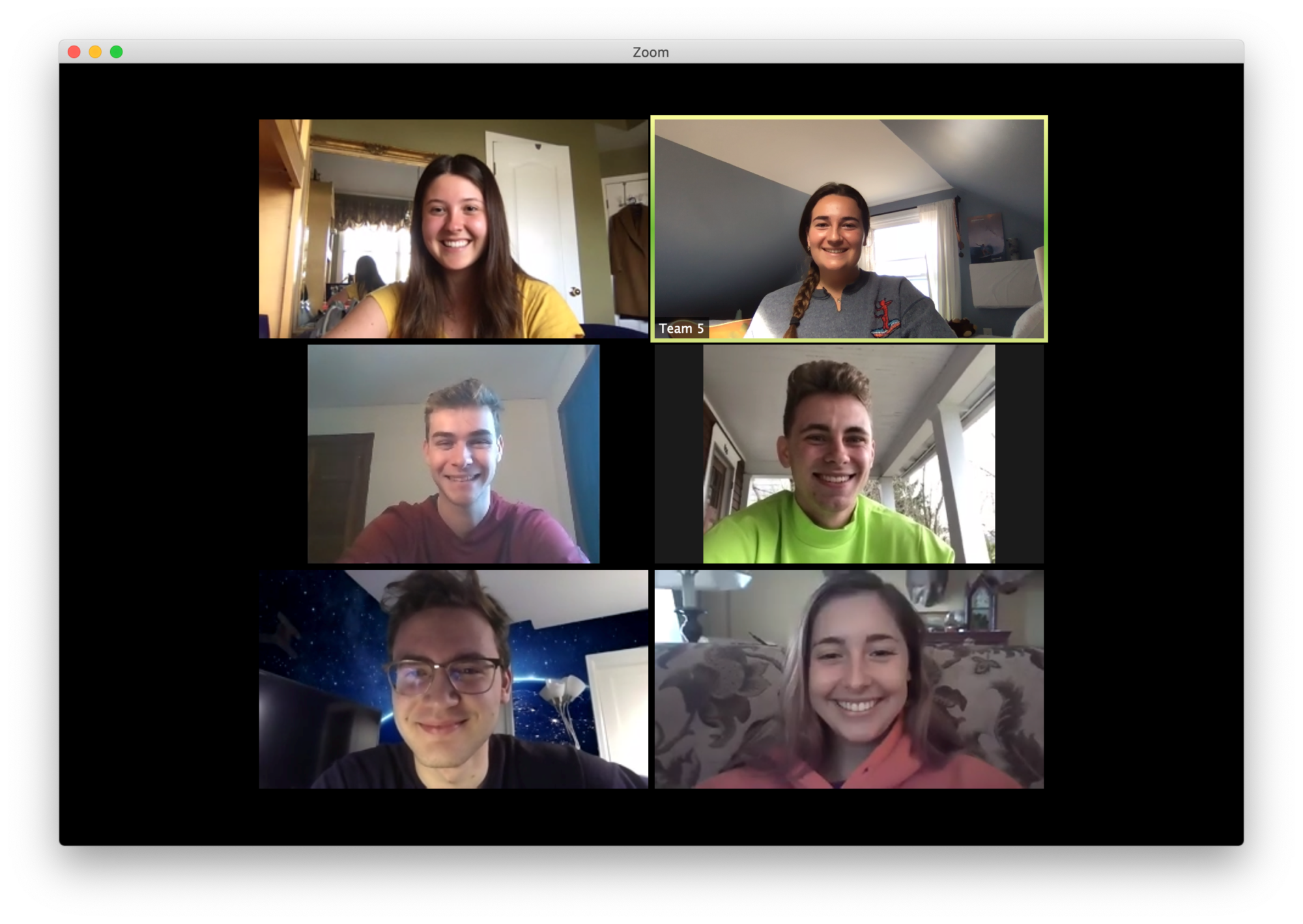
During these unprecedented times, it is easy to feel discouraged and helpless due to the uncertainty surrounding the global Corona Virus (COVID-19) pandemic. Remarkably, a group of six Syracuse University friends who met during their freshman years, were able to align their engineering backgrounds to make a difference for people who test positive for COVID-19. Emily Fuchs, ’20, Victoria Bialczak, ’20, Owen Clyne, ’21, Aleks Džodić, ’21, Kathryn Lindgren, ’21 and Seth Reed, ’21, joined forces last Friday to register for the Johns Hopkins COVID-19 Design Challenge. The challenge was a global competition and the SU team competed against 231 other teams from more than 20 countries.
It takes an insurmountable amount of maturity, drive and passion to be able to comprehend that although you want to help everyone through this tumultuous time, especially those who have contracted COVID-19, it is impossible to effectively do that.
Džodić explained that while it was disappointing to realize this, “design pathway became clearer because it forced us to be more realistic about our concept,” he said.
In under a week, the super six undergraduate SU School of Engineering and Computer Science students were able to attend virtual lectures led by professionals affiliated with Johns Hopkins, decide on a need statement, based off the existing challenge concepts, come up with an idea, iterate their idea based on feedback from mentors, doctors and people who tested positive for COVID-19 and submit their proposal to the competition.
Specifically, the group’s idea focuses on the community transmission concept. Adam Goodwin, a mentor to the team assigned by the Johns Hopkins COVID-19 Design Challenge Team, guided them to focus on a specific point in the patient pathway. After choosing to focus on post diagnostic care, the team was able to connect with medical personnel from Upstate University Hospital through the Blackstone LaunchPad, and learned that there is no system to record and guide patients on how to take care of themselves after testing positive for COVID-19. Reed describes how their database, COVID-ST, caters to “patients who are at home who have COVID-19.”
“The system regularly records symptoms, creating trends, that empower patients to make informed decisions about when and if they need hospitalization. A lot of people are feeling stressed and anxious because they do not know what to do after they have been tested and there is a lot of confusion on how and what symptoms to track.”
COVID-ST aims to streamline that process and make their system available for anyone at any point to use Clyne said. The group explained that “hospitals will also benefit from this data by analyzing potential patient admissions. With enough data, hospitals can understand the trends of COVID-19 patients who end up needing hospital care.”
Lindgren is proud of the group’s work. “Many big tech companies have come out with similar systems that focus on pre diagnosis and if patients should go to medical centers to get tested for COVID- 19,” she says. “COVID-ST focuses on guiding patients how to take note of symptoms after the patient has the understanding that they do not need hospital care yet.”
The team is aware of the impending pressure and importance surrounding COVID-19 research and patient care. Despite the continuous influx of real-time data surrounding the virus, Fuchs, Bialczak, Clyne, Džodić, Lindgren and Reed are committed to doing what they can by willingly adapting and iterating COVID-ST for the needs of medical professionals, starting with the Central New York Community.
The group is thankful to the professors, advisors, friends and medical personnel who have been integral in guiding them through this challenging and vital process of creating COVID-ST.
If you would like to get involved, the team is looking for a web designer and would love to meet you. Reach out to the LaunchPad team at LaunchPad@syr.edu for more information or join the team as it continues to work on COVID-ST.
Story by Blackstone LaunchPad Global Media Fellow Emma Tyler Rothman Photo submitted by Seth Reed